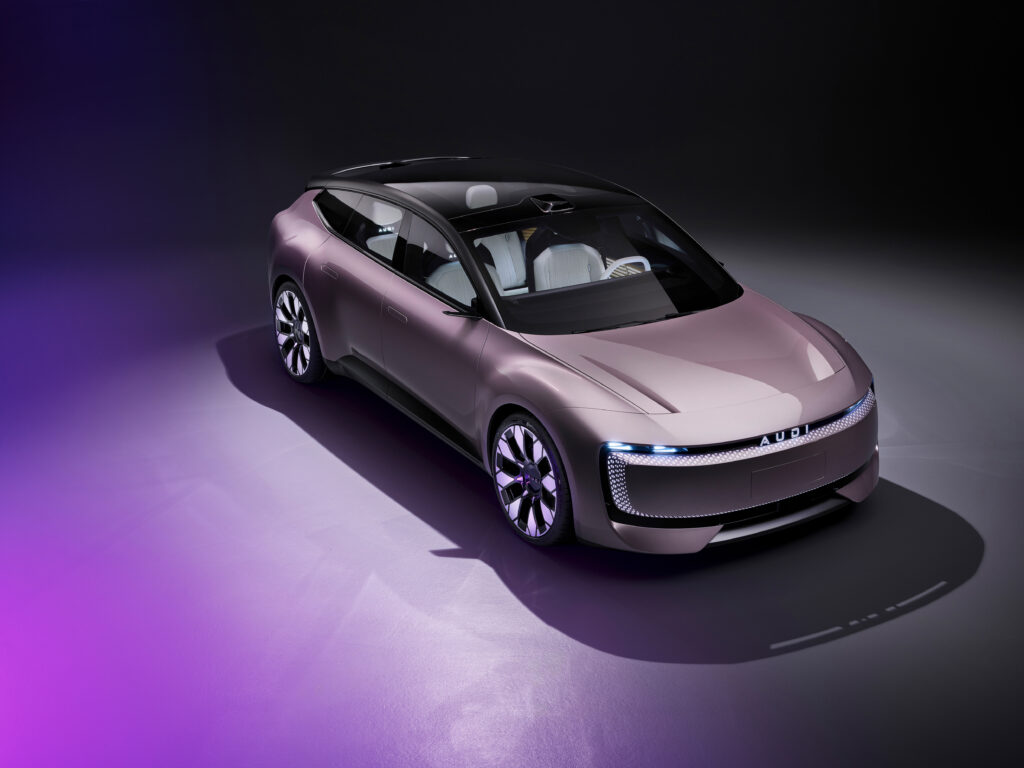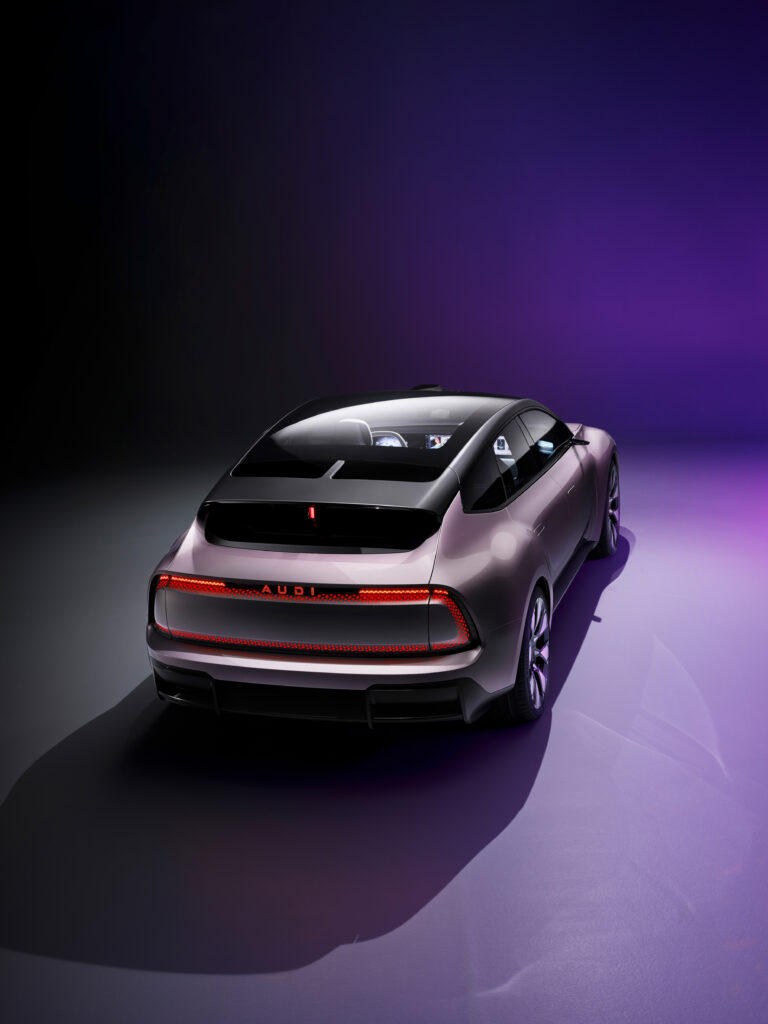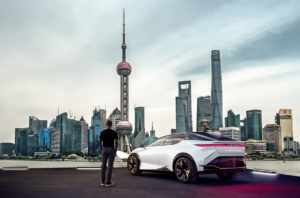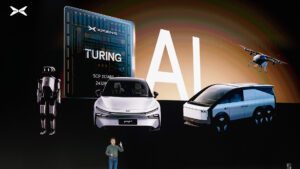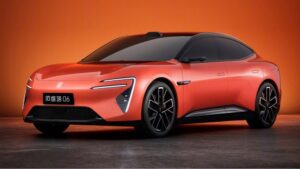Out with the four rings, in with the four letters, as AUDI plots the comeback of German electric cars in China.
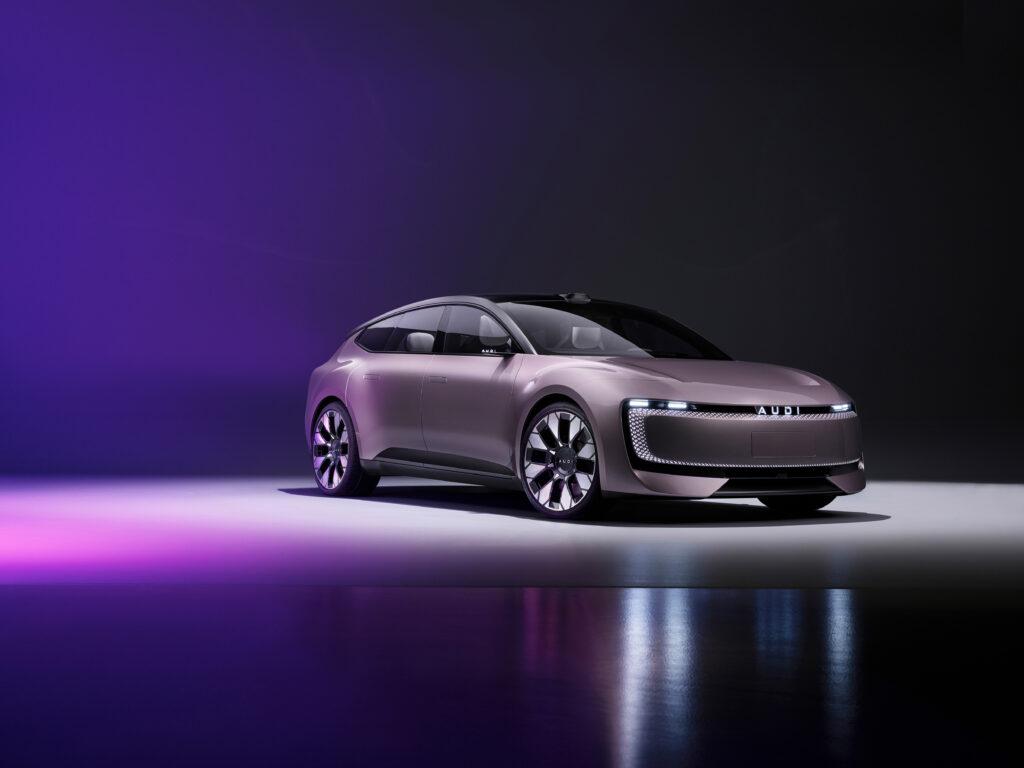
The brand is the first product of a collaboration forged between Audi and Chinese automaker SAIC that aims to bring together the engineering prowess of Germany and the innovation and speed of China. It forgoes the four-ringed logo of Audi in favour of simply the letters, AUDI, delicately treading the line between brand and heritage.
In the words of Gernot Döllner, Audi CEO: “By launching this new brand for electric and intelligent models in China, Audi is breaking new ground to tap into new and more tech-savvy customer segments.”
The first product of the venture, which initially expects to bring three production cars to market from mid-2025, is previewed by the AUDI E concept, a mid-sized ‘Sportback’ (read estate), with looped lighting elements at either end and an unmistakably Quattro-esque stance.
Exterior and Drivetrain
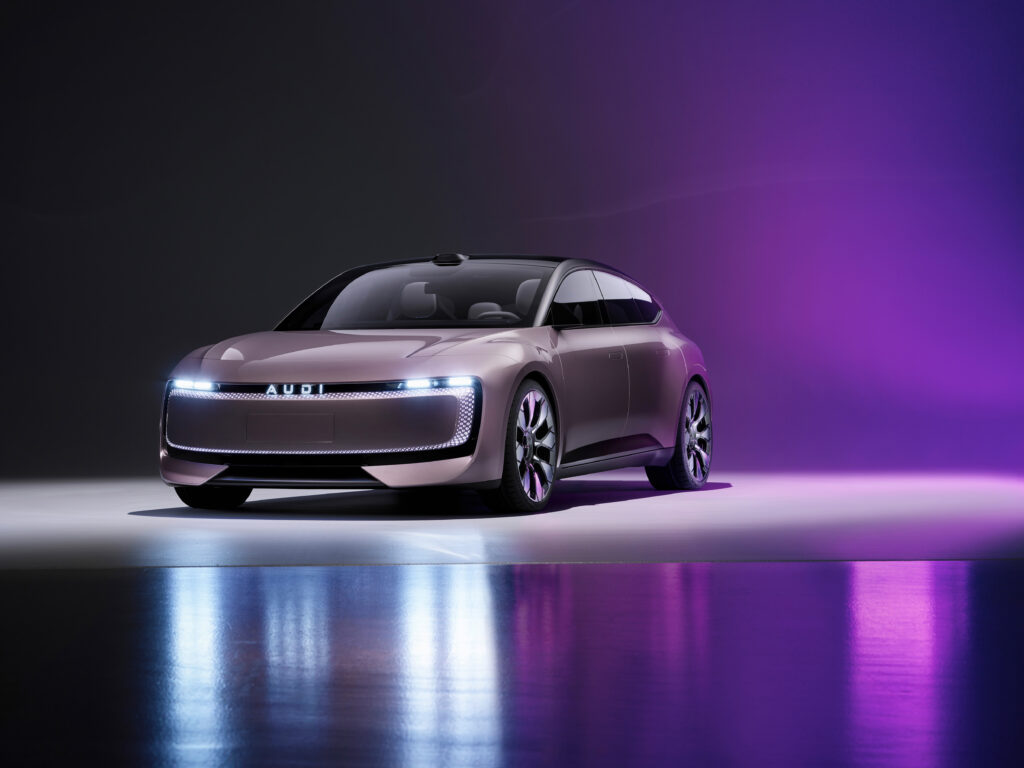
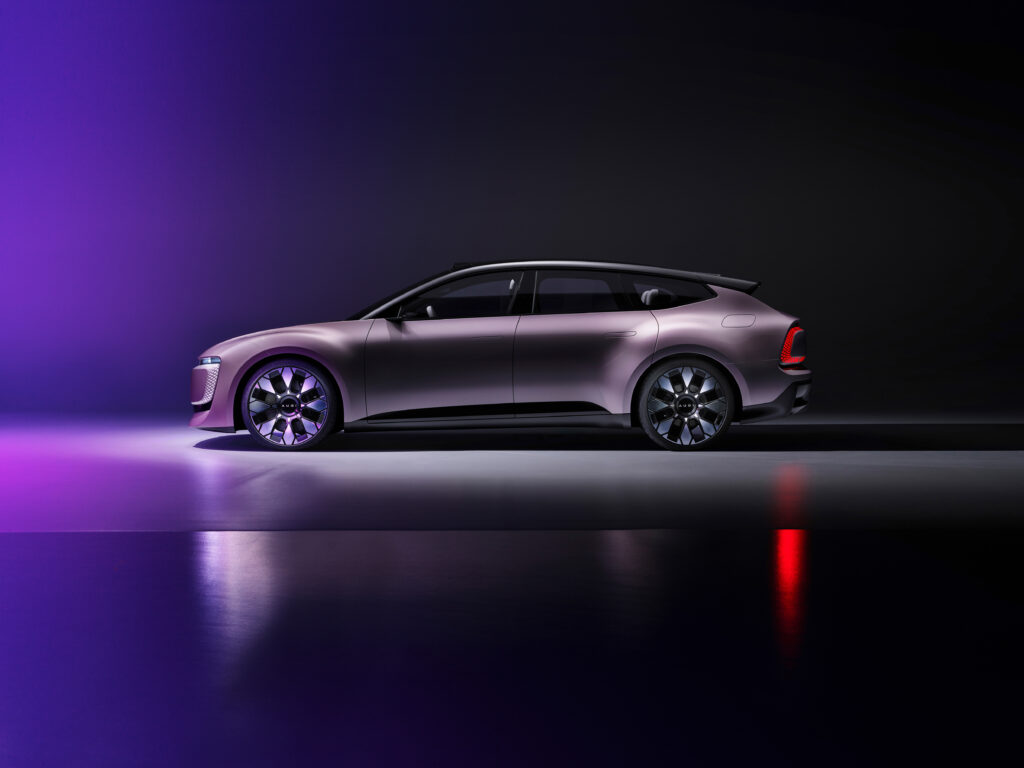
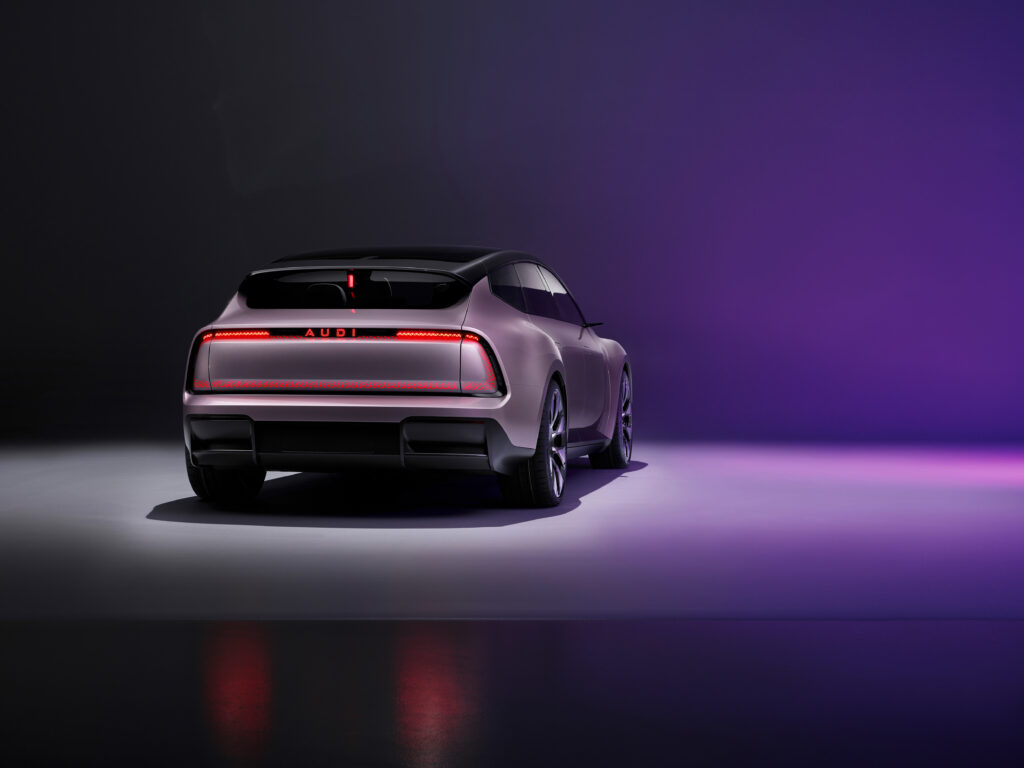
Measuring 4.87-metres long, 1.99-metres wide, 1.46-metres tall, and with a wheelbase of 2.95-metres, the E concept sits half way between an Audi A4 Avant and Audi A6 Avant in dimensions and is quite low for an electric estate car. That wheelbase, by the way, just happens to exactly match that of the IM LS6, a brand of SAIC.
It boasts a pair of motors, one for each axle, producing a combined 570kW of power and 800Nm of torque, giving it Audi’s signature Quattro four-wheel drive and a 0-100kph sprint of 3.6 seconds.
Using an 800-volt architecture, it draws power from a 100kWh battery, the brand of which wasn’t mentioned, and should be capable of driving 700km on a single charge on the CLTC cycle. Audi claims it can charge 370km in just 10 minutes, putting it right up there with the best currently on the market.
Sporting a lidar atop the windscreen, the E concept will likely come with a variation on SAIC’s IM AD autonomous driving system that enables urban autonomous driving as well as numerous auto parking functions that have become very popular in China. Whether the AUDI will also come with the rear-wheel steering and pivot function, where a car is able to rotate around a braked front wheel like on the IM LS6, is unconfirmed.
Interior and Infotainment
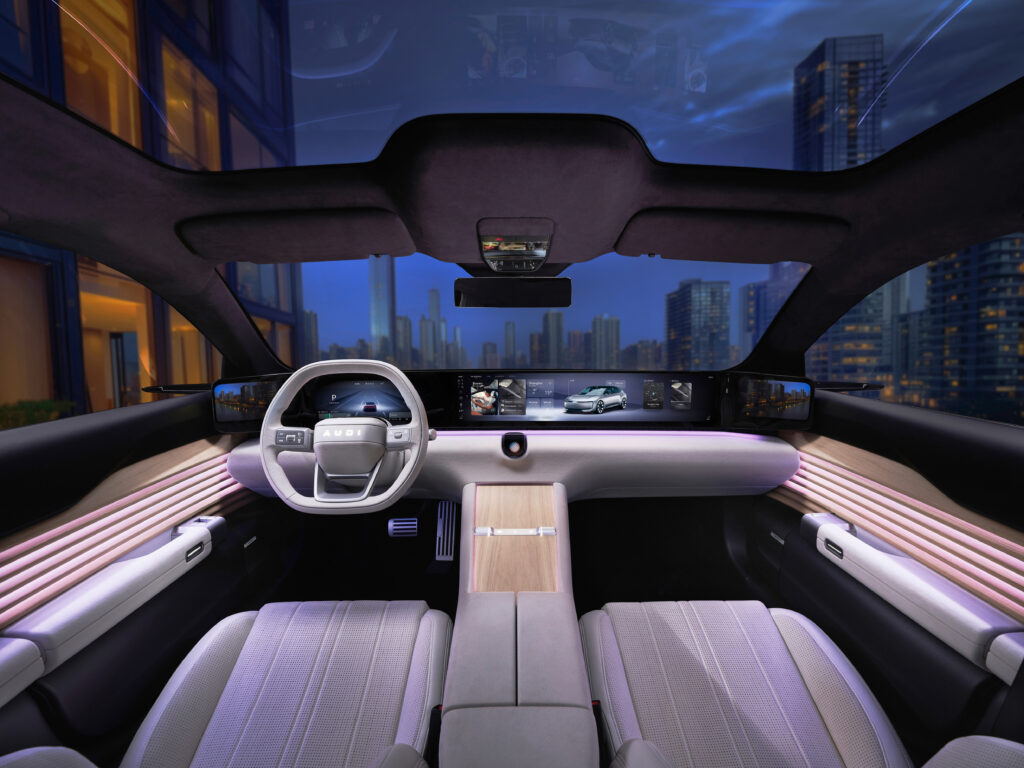
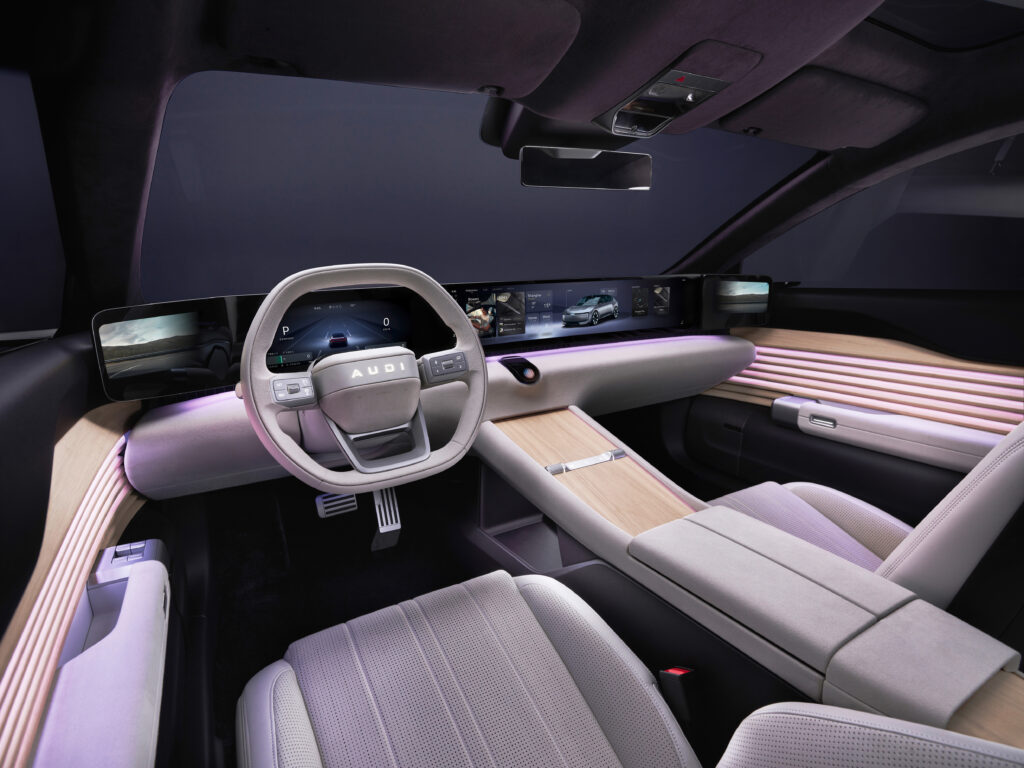
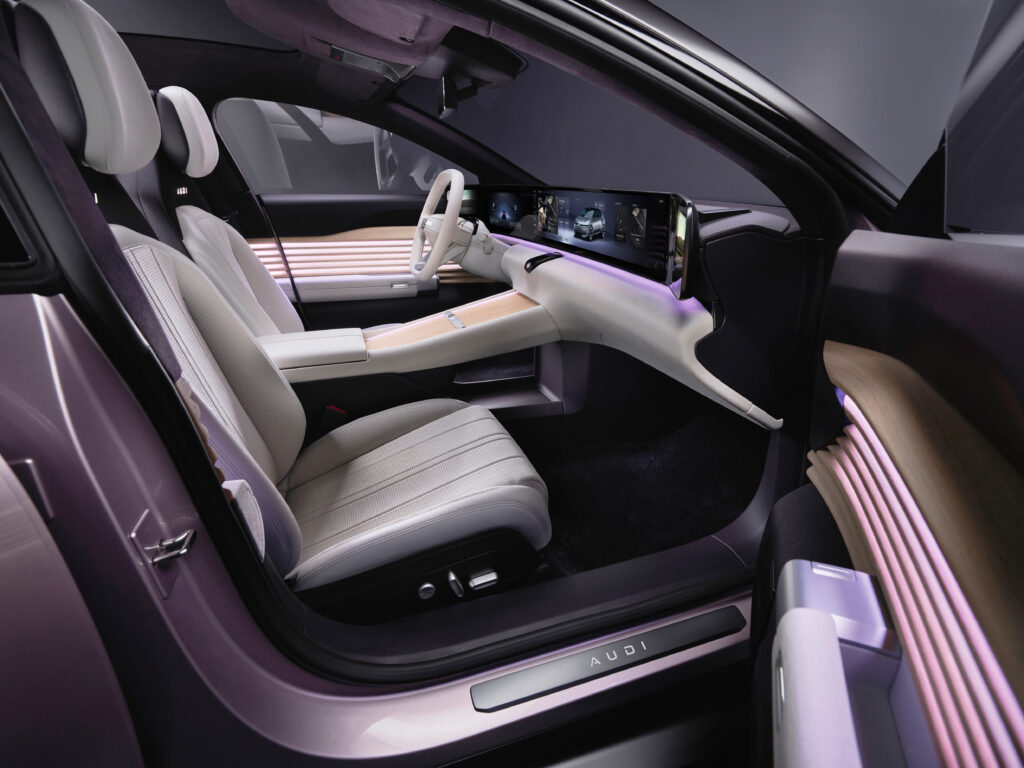
Inside, the E concept features a typically premium interior with lashings of wood and microfibre laid out on the doors in a lamella design, to give an elegant, modern take on Audi’s traditional design principles.
As you’d expect from a modern day electric car, the E concept also features a 4K touchscreen layout that stretches the full width of the car, with individual screens in the corners to replace the wing mirrors, and a large screen connecting them across the middle for all other functions.
Beneath the screen sits the AUDI Assistant, an AI avatar with both touch and voice controls that can navigate the infotainment system contextually depending on which function is being used. On close inspection it appears to be a visual graphic inside some kind of toggle device, though we’d need AUDI to confirm that.
Elsewhere, the centre console leaves space for storage underneath and slots for two phones on top, and though it’s not mentioned if these are wireless chargers it is stated that smartphone integration will be enabled.
What’s next?
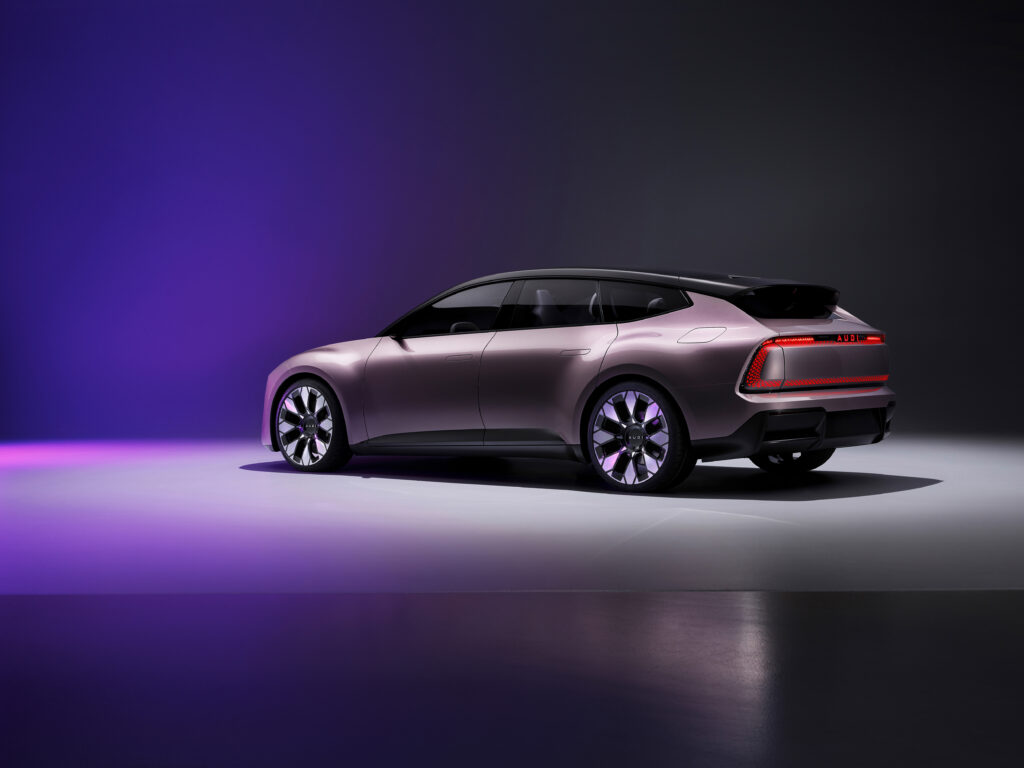
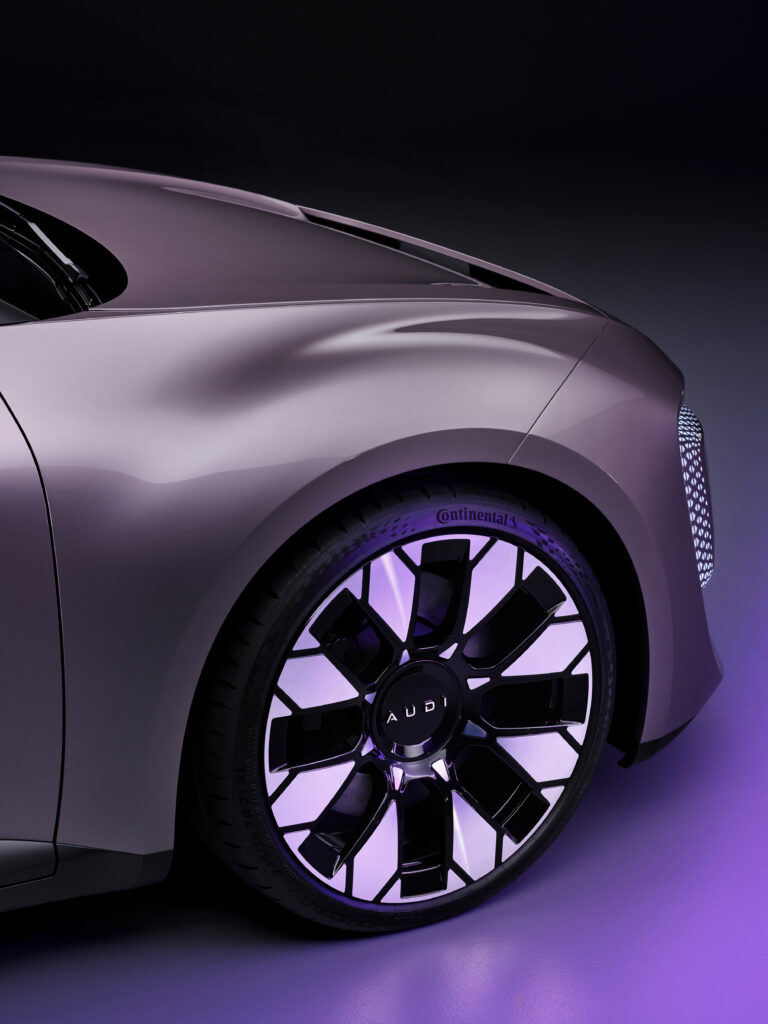
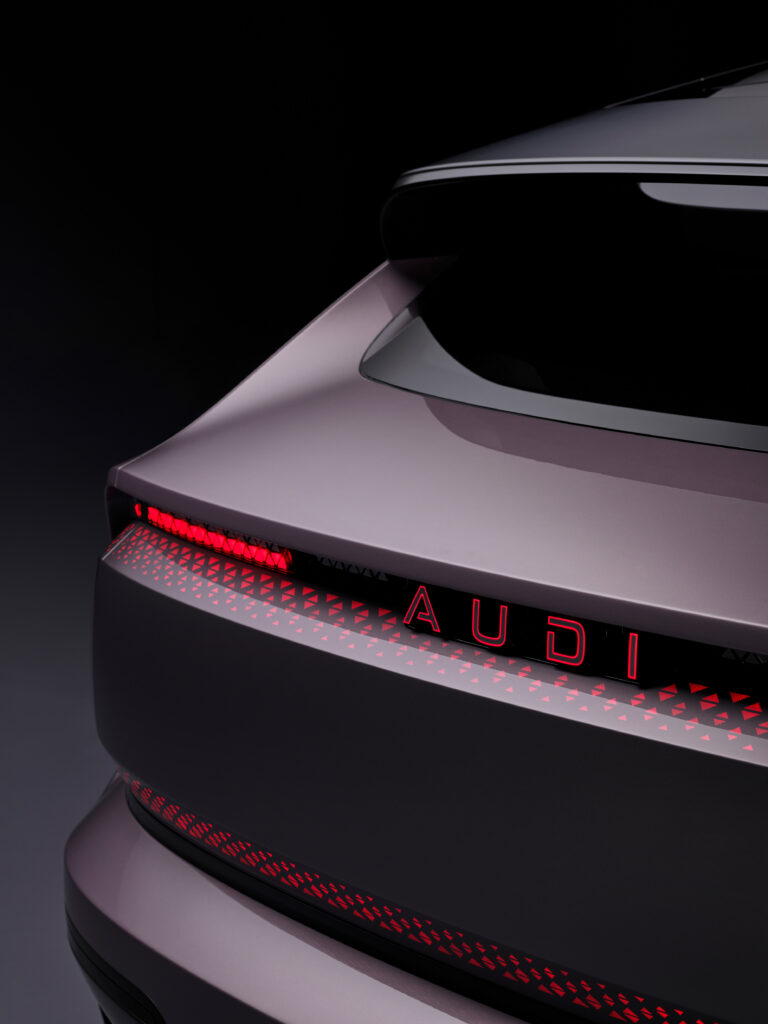
Audi seems to have recognised the need to treat the Chinese market on its own terms, noting the different requirements of Chinese consumers who are on the whole “younger”, “more tech-savvy”, and who expect “leading connectivity as well as automated driving”.
The AUDI team in China will be led by Fermín Soneira, formerly the long-standing Head of Product Line for Electric Models at Audi, and a man with 25 years of experience within the Volkswagen Group. He said of the co-operation with SAIC: “Our cooperation reflects the spirit of ‘the best of both worlds’ and has been set up to jointly organise development, purchasing, production, and sales.
“With both parties contributing their core strengths, I firmly believe Audi will continue to shape the future of premium electric mobility by integrating the innovation strength of the market.”
Likely getting a debut at April’s Shanghai Auto Show, the E concept previews the first of three electric models that will sit in the mid- and full-size segments, otherwise known as B and C segments, so expect to see at least one SUV in there if not two.
Editor’s note
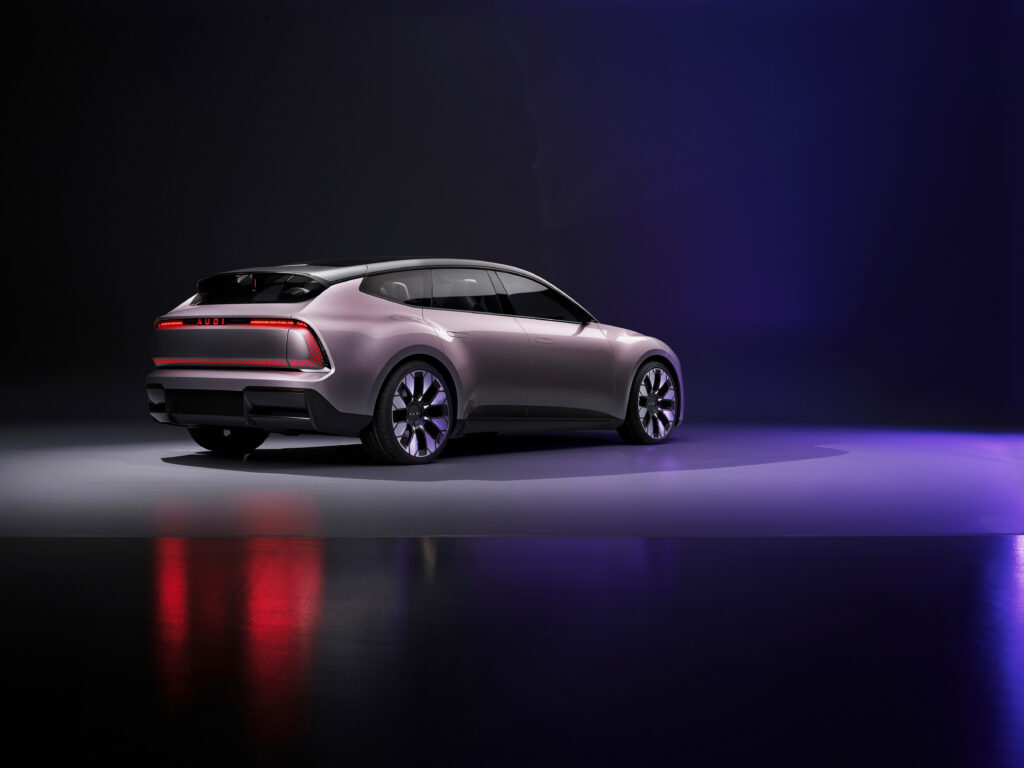
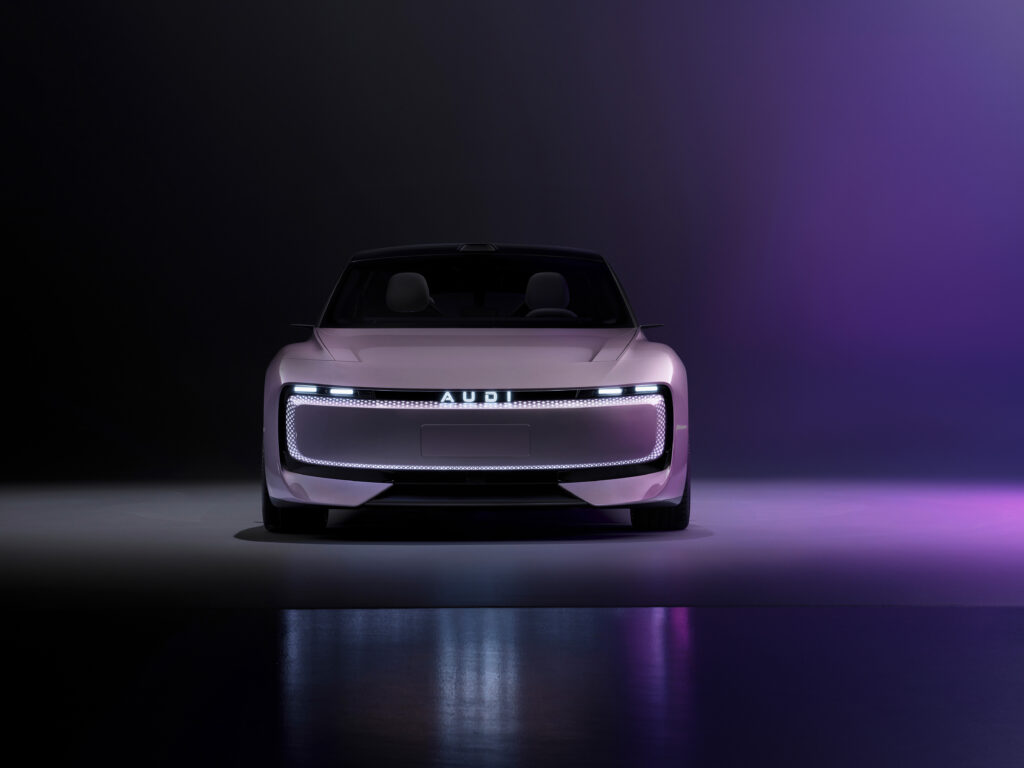
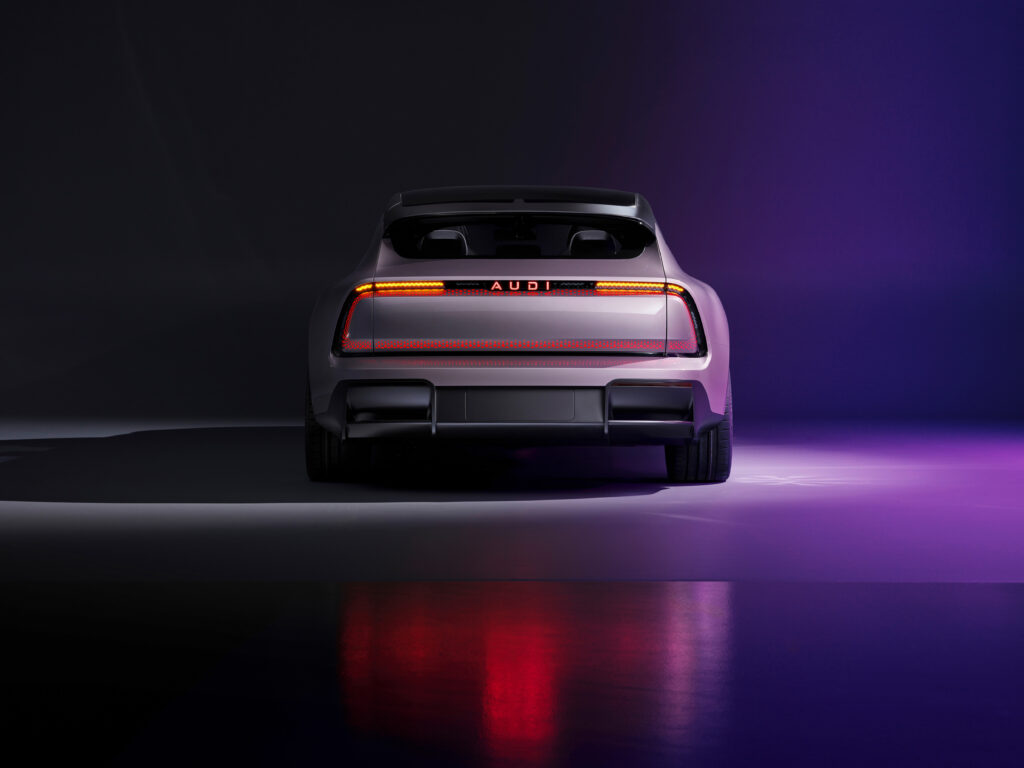
Audi claims the collaboration model reduces the time-to-market by 30% and in that one statistic you can already see part of their justification for joining hands with a Chinese car maker.
It’s taken us a while to get to this point, where a German car maker feels able to swallow a bit of pride in order to collaborate with a Chinese brand, but this may just be the starting point for German legacy auto’s comeback in the electric automotive space in China.
It’s often said that young Chinese consumers don’t care for brands like their parents did, but that’s somewhat disingenuous. They do still love a brand name, they do still value quality and heritage, but it has to reach their modern standards and European EVs just haven’t done that so far.
I’ve been questioning for years whether European brands, attempting to traverse two often wildly different car cultures, might need to consider a China-specific approach. Audi seems to finally have settled on the conclusion that it might be a good idea after all, so we’ll look forward with great anticipation to see how it plays out.
